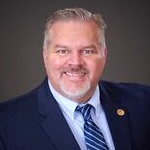A new book from Corwin offers educators the tools and processes they need to integrate social-emotional learning into virtual, blended, or in-person environments.
 By Stoney M. Beavers
By Stoney M. Beavers
ABPC Assistant Director
For most of us, it is rare that we really push ourselves to learn a new skill without a need for it in our current situation. We work hardest on something when the necessity is squarely in front of us.
We learn to change a flat tire on the side of a six-lane interstate cutting through Atlanta. We finally learn our lines or memorize the song only when the director demands for us to be “off book” – or sometimes right before being thrust out onto a stage in front of a live audience.
All of this to say: many of us procrastinate. We’ll finally learn something when we really need to know it.
What we are learning from parents, educators, and experts from across the country right now is that if we ever intend to get students back to learning at high levels, we must address the social and emotional needs that are not being met and that are, in fact, needed now more than ever.
We’ve come to understand the realities of living during a pandemic, as well as in a time of great social and political unrest. While we are somewhat relieved by the resilience of children, we must also acknowledge that we cannot continue “education as usual” without recognizing and working together to address these SEL needs.

The problem, however, is that meeting these needs is also more challenging than ever right now. To help with this, Jessica Djabrayan Hannigan and John E. Hannigan have given us SEL from a Distance, a new book from Corwin with the tagline: Make social and emotional learning a way of being—all day, every day, and in any setting.
Put another way, and referencing the need that is right in front of us: How do we address SEL gaps when students are not in the classroom with us, or if they are, they’re still physically distanced?
A book rich in tools and processes
The authors begin by providing some updated context on the social and emotional challenges facing students right now. We now know that about 70% of students are reporting “struggling with mental health in some way” (4). More and more students are also experiencing heightened anxiety, stress, loneliness and depression, and as a result, student engagement has decreased significantly.
Educators who fail to acknowledge and respond to this reality are most likely exacerbating the situation. When we don’t have strategies to help students learn about and master SEL skills, we are not being as effective as we could be at helping them grow and thrive as learners.
Educators ourselves have often really struggled with self-care. We are championed for working long hours and putting student needs first. As a result, we are not always the best models of enlightened self-interest and social and emotional skills. As The Ron Clark Academy’s co-founder Kim Bearden says, “It’s hard for broken adults to help broken children.” Just sit with that thought for a minute.
While SEL from a Distance may not provide all of the answers, it does go a long way in organizing and sharing some great ideas for engaging students with this perspective on self-care and helping us all address these needs in a systematic way.
We can’t just throw this on educators as something else for them to do or to add to their already insane schedules. We can, however, help them realize that this may very well be our most important work. As the authors say, “SEL is not a thing to do. It is a way of being – all day every day – in any setting” (33). This book gives us a better plan for how to “be” with students, especially during this very difficult time. Even many students themselves recognize that they really aren’t learning right now; they are just hitting submit by 11:59.
This book provides many powerful tools for figuring out where we are with SEL – as educators and schools – and where we want to go and how to get there. The tools and processes are designed to work in face-to-face as well as in remote and blended learning environments, and many of the tools should really help educators empower students to gain very valuable social and emotional skills that will directly improve behavior and learning.
The necessity is right in front of us
If you want to know more about the importance of SEL, and how to bring more of it into your room, Zoom, home, or school, I highly recommend SEL from a Distance. Now is the time. The situation is urgent, the tire is flat, the concert hall is filling up, and it’s time to go live. We can’t put it off any longer.
If we truly want to help our students “bounce forward,” then we as the adults must be equipped to help them acquire the crucial social and emotional skills that are missing in their lives and then use these skills to boost their success in learning and in the world beyond school.
Dr. Stoney M. Beavers is Assistant Director of the Alabama Best Practices Center. He has been an award-winning teacher, a Director of Secondary Curriculum, and was Assistant Superintendent in Blount County (AL) for more than a decade.

0 Comments on "Our Students Can’t Wait: SEL Teaching Tools and Processes for Anytime, Anywhere"